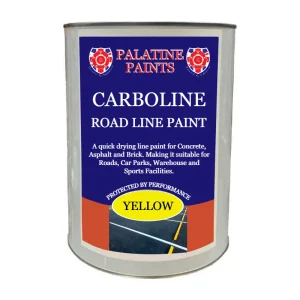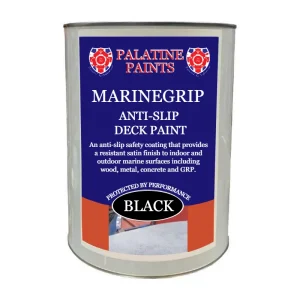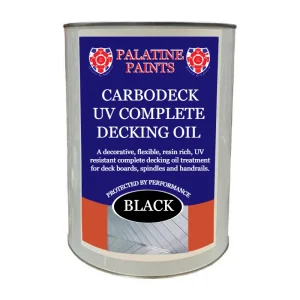Priming and Protecting, Varnish and Wood Oils
How to Treat Decking: Essential Tips for Oiling Your Deck
Maintaining the durability and appearance of your decking is crucial to enjoying your outdoor space to the fullest, and understanding how to treat decking is the first step in safeguarding its longevity and beauty. Treating your decking, particularly through oiling, is not merely a maintenance task; it is an investment in your home’s value and your outdoor living quality. Given the exposure to elements such as rain, sun, and fluctuating temperatures, your deck requires regular attention to keep it in prime condition. Oiling decking, in this regard, can be seen as both a protective measure and an enhancement to the wood’s natural beauty, ensuring your decking remains a welcoming feature of your home for years to come.
This article will guide you through the essential steps of oiling your deck, beginning with the importance of decking oil and detailing how to select the right products for your specific needs. We will then move on to gathering the necessary supplies before delving into the detailed steps for applying decking oil effectively. To ensure your efforts have lasting benefits, we’ll also cover post-application care. Through these sections, you will gain the knowledge and confidence needed to treat your decking, keeping it beautiful and durable throughout the changing seasons.
Importance of Decking Oil
Decking oil plays a crucial role in maintaining the longevity and beauty of your deck. Here’s why it’s essential:
Protection Against Weathering
Decking oils are designed to penetrate deep into the timber, safeguarding it from the harsh effects of weather. This protection is crucial as it prevents water ingress that can lead to wood rot, mould, and algae. These elements can make the decking slippery and unsafe, but with the right oil, your deck remains secure and durable. Many decking oils also contain UV filters, which help to slow down the bleaching effects of the sun’s rays, preserving the vibrant look of your deck for longer.
Enhanced Durability
One of the primary benefits of using decking oil is the enhanced durability it offers. These oils are formulated with high concentrations of oil and wax, which make the decking boards highly resistant to water and dirt. This resistance helps in maintaining the integrity of the wood, preventing cracking, splitting, and warping. Decking oils ensure that your investment remains in top condition, withstanding foot traffic and environmental stresses without peeling, flaking, or blistering.
Improved Appearance
Apart from the protective benefits, decking oils also enhance the appearance of your deck. They help bring out the natural beauty of the wood, highlighting its grain and texture. Whether you choose clear or coloured oils, they can rejuvenate aged decking or enhance the look of new boards, providing a finish that complements your outdoor space. Additionally, oils maintain the wood’s suppleness, keeping it nourished and vibrant through the seasons.
By choosing the right decking oil, you ensure that your deck not only stands up to the rigours of daily use and harsh weather but also looks great throughout the year. Regular maintenance using these oils will keep your decking area welcoming and safe, enhancing your home’s outdoor living space.
Gathering Necessary Supplies
To ensure a quick and efficient oiling process, it’s vital to gather all the necessary supplies beforehand. Here’s a breakdown of the essential tools and materials you’ll need:
Deck Brush and Paint Brush
You’ll need a stiff decking brush for the initial cleaning of your deck. This brush should be capable of handling tough dirt and debris. After cleaning, a paintbrush is essential for the precise application of oil, especially along the edges of the deck where it meets walls or other fixtures. It’s recommended to use a thick paint brush to achieve a smooth, even coat.
Quality Decking Oil
Selecting the right type of decking oil is crucial. Decking oils are available in both clear and coloured formulations, designed to penetrate the timber and provide protection from within. These oils help maintain the wood’s natural beauty, enhance its durability, and protect it from water and dirt ingress. For the best results, choose a high-quality oil that suits the condition and type of your wood.
Other Essential Tools
- Decking Cleaner: Before applying any oil, thoroughly clean your deck with a decking cleaner or a sugar soap solution to remove any chemicals or residues that might prevent the oil from soaking in properly.
- Decking Applicator Pad Kit: For an easier and faster application, use a pole-and-pad style decking applicator. This tool resembles an indoor mop but features a replaceable lambswool cover, allowing you to oil several boards at once.
- Pressure Washer or Hose: To ensure that all dirt and grime are washed away, use a pressure washer or a garden hose. Make sure the deck is completely dry before applying the oil.
- White Spirit or Turps: Keep these on hand to quickly clean up any spills or drips during the application process.
- Dust Sheet and Painter’s Tape: Protect the surrounding areas by laying down a dust sheet and using painter’s tape to cover any adjacent walls or fixtures.
By having these supplies ready, you can streamline the oiling process, making it less cumbersome and more effective. This preparation not only saves time but also ensures that your decking receives the best possible treatment, enhancing both its appearance and longevity.
Detailed Steps for Applying Decking Oil
Cleaning the Deck
Before you begin oiling, it’s crucial that your deck is clean. Start by removing any debris, leaves, or dirt using a stiff decking brush. For a deeper clean, especially if dealing with algae, mold, or moss, use a decking cleaner or a sugar soap solution. Scrub the deck thoroughly, then rinse it off using a hose or a pressure washer, ensuring all cleaner residue is removed. Allow the decking to dry completely, ideally for at least 24 hours, to ensure the wood’s pores are open and ready to absorb the oil.
Edge Application Techniques
To achieve a professional finish, start by cutting in along the edges of your deck but not the ends. Use a smaller paintbrush for this task to ensure precision and to prevent oil from getting onto adjacent walls or fixtures. It’s easier to apply the oil accurately at this stage than to clean up afterwards. If oil does get on unwanted areas, promptly clean it up with turpentine and a rag.
Oiling Board by Board
Apply the decking oil using a long-handled applicator or a brush, working on two boards at a time to maintain consistency. Begin at one end of the deck and work your way to the other, applying the oil in the direction of the wood grain. This method helps to ensure an even coverage. Apply the oil liberally and allow it to penetrate the wood for a few minutes before wiping away any excess with a clean cloth. This prevents pooling and ensures the oil soaks in evenly.
Drying Between Coats
After applying the first coat, allow the deck to dry for about four hours. The drying time can vary depending on the temperature and humidity, so touch the deck lightly to check if it feels sticky. If it does, allow more drying time. Once the first coat is set, apply a second, lighter coat of oil to provide additional protection and enhance the wood’s durability. This second coat will also help in achieving a more uniform finish.
Full Cure Recommendations
Decking oil can take up to seven days to fully cure, although the deck will be functionally dry well before this time. Avoid heavy use or replacing furniture for at least 24 hours after the final application. For optimal results and to extend the life of your oil treatment, try to keep the deck free from debris and clean it regularly. Re-oiling is recommended every 12 to 24 months, depending on the exposure to elements and the usage of the deck.
Post-Application Care
After oiling your decking, it’s crucial to maintain the finish to ensure long-lasting protection and aesthetics. Here are some steps to take for effective post-application care:
Avoiding Heavy Traffic
For the first 24 hours after application, avoid heavy use of your deck. This allows the oil to fully absorb and cure, preventing any premature wear or damage. It’s wise to plan your oiling project when you know the deck can be left undisturbed for a day or two. After this initial period, the surface should be hard enough to withstand regular foot traffic.
Periodic Checks
Regularly inspect your deck, especially after changes in weather or seasons. Look for signs of wear such as fading, staining, or water damage. High-humidity areas may require more frequent checks. If you notice any abnormalities, it may be time to clean the surface with a mild detergent and water, avoiding harsh chemicals that can strip the oil finish. Use a soft brush or cloth to gently clean the wood, maintaining the integrity of the oil’s protective properties.
Additional Protective Measures
To further protect your decking, consider these additional measures:
- Regular Cleaning: Use a soft brush and mild detergent to remove dirt and debris. This not only keeps your deck looking great but also prevents buildup that can wear down the oil finish.
- Avoid Pressure Washing: While it’s tempting to use a pressure washer for deep cleaning, doing so too close to the wood surface can damage the protective oil layer. If a pressure washer is necessary, keep it on a gentle setting and maintain a safe distance from the decking.
- Use Specific Cleaners: For more thorough cleanings, opt for a decking cleaner that’s formulated for oiled wood. This ensures that the cleaner won’t degrade the oil. Alternatively, a homemade solution of baking soda and white vinegar can be effective for mild stains and does not harm the oil layer.
By following these maintenance tips, you can extend the life of your decking oil treatment and keep your deck looking beautiful and functional for years to come. Regular care not only enhances the appearance but also ensures that your deck remains a safe and enjoyable part of your outdoor space.
Enamel Thinner
Painting Equipment
Paint Brush
Conclusion
Through the intricate process of oiling your deck, we’ve tackled essential practices that preserve its allure and longevity. Emphasizing the protective and aesthetic benefits of decking oil, this article has journeyed from selection criteria to application methodologies, ensuring you’re equipped with the knowledge to maintain your decking’s condition. The importance of post-application care cannot be understated, as it significantly contributes to the sustained beauty and functionality of your outdoor space. By adhering to these guidelines, your deck is not just treated but invigorated, ready to face the elements and daily use.
The implications of this care extend beyond mere appearance; they encapsulate an investment in your home’s value and your quality of life. Regular maintenance and the right choice of oil ensure your decking remains a vibrant, welcoming extension of your home. As we conclude, remember that the journey of decking care is ongoing, marked by seasonal changes and the evolving needs of the wood. In the spirit of preservation and enhancement, may your deck continue to be a testament to the enduring beauty and resilience of well-cared-for timber.
FAQs
What is the best way to prepare a deck for oiling?
To prepare your deck for oiling, follow these steps:
- Clear and Clean: Start by sweeping off any loose dirt, debris, and leaves using a soft-bristled brush or broom.
- Prepare Your Decking: Ensure the surface is smooth and free from any imperfections or residues.
- Select the Appropriate Decking Oil: Choose an oil that best suits the type of wood and the desired finish.
- Apply the Decking Oil: Evenly distribute the oil across the surface.
- Let It Dry: Allow sufficient time for the oil to dry completely before using the deck.
How should you clean a deck before oiling it?
Before oiling, it is crucial to thoroughly clean your deck to ensure the oil adheres properly and lasts longer. Remove all dirt, debris, and any old finishes that may prevent the new oil from penetrating the wood.
Is it necessary for the decking to be dry before oiling?
Yes, it is essential to ensure that the decking is completely dry before applying oil. Applying oil to damp decking can trap moisture, leading to potential wood damage and a poor finish.
Do I need to sand my deck before oiling?
Yes, sanding your deck before oiling is necessary to prolong its lifespan. Sanding removes damaged and splintered wood, creating a smooth, clean surface that is ideal for oil application. This step is crucial for achieving an even and durable finish.
Contacting us is easy!
Email: [email protected]
Call Us: 01942 884 122
Contact form: https://www.palatinepaints.co.uk/contact-us
Live Chat Service: Press the small blue icon at the bottom left of your screen.


